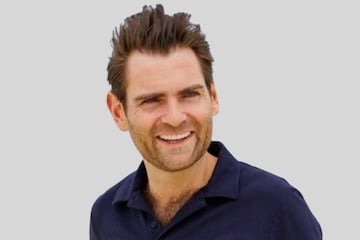Beardbrand Shifts to Growth, New Channels

I occasionally focus an “Ecommerce Conversations” episode on Beardbrand, my business. I do that not to promote the company but to share our challenges and successes in the hopes of helping others.
In 2024 alone, I’ve addressed last year’s sales decline, continued hurdles, and the hassle of changing fulfillment providers. I also interviewed our attorney, who successfully defended us in a lawsuit alleging accessibility violations.
We’ve now overcome many of our operational setbacks. We had to relaunch certain products and switch our manufacturer. We’ve moved to a warehouse here in Texas, which gives us more oversight. With these problems solved, the focus shifts back to growth and finding new channels.
That’s what I’ll discuss in this episode. My entire audio is embedded below. The transcript is edited for clarity and length.
Black Friday, Cyber Monday
Our 2024 Black Friday and Cyber Monday campaigns didn’t meet expectations. Traditionally, our BFCM focus is product launches instead of discounting. We wanted to introduce a new product for Black Friday, but the launch was delayed until Cyber Monday and then pushed to mid-December. This disrupted our holiday selling. Sales weren’t down, but the missed product launch made a noticeable dent.
Last year, we introduced a bundling promo — buy three items, get a fourth free — and it performed so well that we kept it as a permanent feature. We had no similar Black Friday promo this year. We considered a subscription-based discount but decided against it due to concerns about sending the wrong message to customers and the potential complexity of managing it.
I also sent an email inadvertently encouraging customers to wait for Cyber Monday instead of taking advantage of Black Friday deals.
Cyber Monday was our best revenue day since Black Friday 2023. We had planned to launch our utility deodorant this year, but it too got pushed to mid-December.
We reverted on Monday to offering pre-launch pricing to loyal customers. They had a short window to purchase the product at a lower price. This strategy is my preferred way to handle discounts because it feels less like a markdown and more like a product release with dynamic pricing.
We sent three emails throughout Cyber Monday promoting the eventual launch, which helped boost sales. However, there were some logistical hiccups. Our pre-launch pricing wasn’t displaying correctly, and we had to fix it last minute. Despite the challenges, the promo went well, and we hit our sales goals.
Sales Growth
November 2024 sales were up about 8% compared to last year. However, we’re replacing lost organic YouTube sales with ads. In 2022, 48% of new customer sales came from YouTube, generating roughly $670,000. By 2023, that dropped to $366,000; this year, we’ll be lucky to reach $250,000. With YouTube becoming less effective, we’ve had to shift to social platforms such as Facebook and X, bringing our overall 2024 advertising spend 75% higher than last year.
Adapting for 2025
As we move to 2025, we’re in a better place operationally, but we need growth channels. Beardbrand’s products are consumable — ideally, customers will reorder. We may explore new fragrances or product sizes in 2025 but won’t go overboard with launches. The goal is to focus on top-selling products with consistent customer education and communication.
Our business is fundamentally shifting. We must assess the growth potential of organic channels such as YouTube or, instead, shift to advertising for customer acquisition.
I never set sales targets. I focus instead on the inputs and let the outputs follow. Businesses should appreciate the hard work and effort, regardless of whether it pans out. Factors like timing, market conditions, and even packaging can influence success, as can a bit of luck.
Ultimately, it’s essential to enjoy the journey. Every day is a gift. There’s no right or wrong way to build a business — it’s about aligning it with your values and goals. That’s the beauty of being an entrepreneur.








